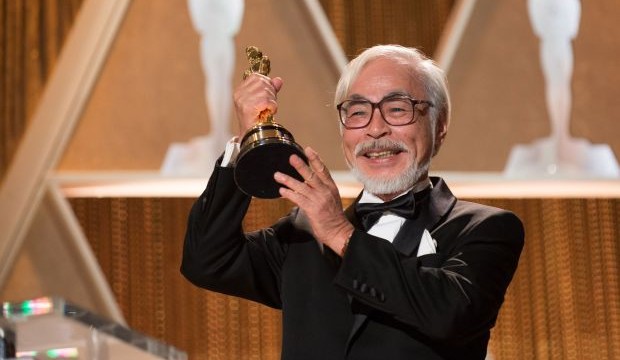He is apparently coming out of retirement again, but I have to tell you, I’m not sure how much I think it counts—he’s making a short film that will only be shown at the Ghibli museum. It won’t be released on disc even in Japan. It’s going to be ten minutes long, so I have a hard time seeing it as a real coming out of retirement.
Then again, Hayao Miyazaki is seventy-five. This short will be his first CGI effort, and he retired the last time because he didn’t feel up to the work of his standard ten-hour days doing the work of helping to hand-draw all of his films. You kind of can’t blame him for not wanting to do that until he drops dead. Though it does seem that “work shorter days” is not a concept he understands.
There’s a reason, though, that Miyazaki has for decades been the counter to the argument “all anime sucks.” He hasn’t made many films—he has only directed twelve between 1979 and 2013—but they are almost universally agreed to be some of the best animated films to have been made in that period. He has two Oscar nominations and a win in a category that didn’t even exist until 2001; the only of his eligible films not to have been nominated was Ponyo.
Even when he is taking others’ work and continuing a pre-existing series, the Miyazaki touch is still apparent. His attention to detail is always evident; one of the things I noticed with My Neighbor Totoro is that the stream has trash in it. When I saw Ponyo, I was certain that all the creatures shown as the sea rose to cover the town were based on Devonian fossils, because that was the relevant era. As it turns out, I was right.
I’ve been told that the films of Studio Ghibli “don’t count” as anime, because they don’t fit into the person’s notion of what anime really is. The person was very tired of the “but Miyazaki!” argument every time he said that all anime sucks. And it’s true that Miyazaki films don’t tend to feature sexy schoolgirls or giant robots. On the other hand, he did do a lot of work in the ’60s and ’70s equivalent; among his credits are the long-running Future Boy Conan and Sherlock Hound. His first feature was the 1979 The Castle of Cagliostro, an installment of Lupin the 3rd, after having directed many episodes of the TV show.
What’s worth noting, though, is that even within the constrained requirements of the Lupin franchise, Miyazaki made the series his own. Instead of the unsettling womanization for which the character is known, something Miyazaki himself found uncomfortable, this Lupin is a father figure. Yes, he has a lech for Fujiko, but instead of drooling all over the princess, he sees himself as a guardian, protecting her from the evil count she is expected to marry. The movie’s humour is wry more often than it is zany. Lupin is even definitely on the side of the angels in the story.
Maybe Miyazaki will make more features; maybe he won’t. Either way, we will be lucky to have gotten the ones he’s made so far. We’re also lucky for the better class of people inspired by them, which is not a short list.

